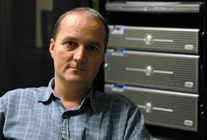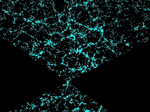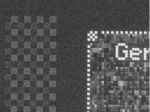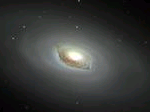Contact information
 Dept.
of Physics of Complex Systems
Dept.
of Physics of Complex Systems
Eötvös University
Budapest
Pázmány Péter sétány 1/A
H-1117 Hungary
Tel: (+36-1)-372-2826
Fax: (+36-1)-372-2866
Email: csabai at complex elte hu
Research
Photometric redshifts and large scale structure
 To understand the cosmological laws that govern our Universe, we need a detailed
map of the galaxy distribution. Large scale astronomical surveys like the
Sloan Digital Sky Survey (SDSS) scanned the sky for years and collected data
on hundred millions of galaxies. One simple and also crucial parameter, the
distance of an extragalactic object from us, is especially to hard to measure.
According to Hubble's law there is a linear relation between distance of a
galaxy and the redshift of its spectrum. SDSS took picture of more than 150
million galaxies, but doe to observational limitations it was able to get
redshift less then 1% of them. With my collaborators and students I am
developing methods, to estimate
photometric redshift and other physical parameters for the other 99%.
To understand the cosmological laws that govern our Universe, we need a detailed
map of the galaxy distribution. Large scale astronomical surveys like the
Sloan Digital Sky Survey (SDSS) scanned the sky for years and collected data
on hundred millions of galaxies. One simple and also crucial parameter, the
distance of an extragalactic object from us, is especially to hard to measure.
According to Hubble's law there is a linear relation between distance of a
galaxy and the redshift of its spectrum. SDSS took picture of more than 150
million galaxies, but doe to observational limitations it was able to get
redshift less then 1% of them. With my collaborators and students I am
developing methods, to estimate
photometric redshift and other physical parameters for the other 99%.
Spatial indexing of large databases and machine learning
 Large
observational and measurement surveys in physics, astronomy, meteorology,
biology and many other disciplines collect huge amount of complex data.
Scientists create models and simulations to understand the underlying laws of
nature. To efficiently handle the avalanche of observational and simulated data,
and to be able to compare theory with models we need to use the current state of
art of information technology. We are developing various algorithms and tools to
handle multi-dimensional complex databases.
Among them
we have been and we are using various
machine learning methods.
Large
observational and measurement surveys in physics, astronomy, meteorology,
biology and many other disciplines collect huge amount of complex data.
Scientists create models and simulations to understand the underlying laws of
nature. To efficiently handle the avalanche of observational and simulated data,
and to be able to compare theory with models we need to use the current state of
art of information technology. We are developing various algorithms and tools to
handle multi-dimensional complex databases.
Among them
we have been and we are using various
machine learning methods.
Complex networks
 The relation between people, neurons or biochemical reactions can be modelled as
complex networks of interactions. But not only nature can produce such
complicated structures communication networks like the Internet is equally large
and complex and we have to use the same mathematical tools and technology to
analyse it that we use for studying natural systems. We have created a
Europe-wide precision traffic observatory (ETOMIC), collect traffic
measurements and analyse the data.
The relation between people, neurons or biochemical reactions can be modelled as
complex networks of interactions. But not only nature can produce such
complicated structures communication networks like the Internet is equally large
and complex and we have to use the same mathematical tools and technology to
analyse it that we use for studying natural systems. We have created a
Europe-wide precision traffic observatory (ETOMIC), collect traffic
measurements and analyse the data.
Bioinformatics
 The quickly evolving technology of DNA/RNA microchips and new generation sequenators open
up uncharted territories in genomics and other areas of microbiology. Even small institutes or research groups
can afford to sequence whole genomes or measure the levels of the expression of all
genes. These methods easily produce terabytes of data for a single sample. Handling this large
amount of information is beyond not just the capacities of a standard biostatistics toolbox but often
exceed the limitations of many modern datamining algorithms. We are working on the improvement of
the computational framework and algorithms and collaborate with biologists and doctors to harness
the information hidden in the data.
The quickly evolving technology of DNA/RNA microchips and new generation sequenators open
up uncharted territories in genomics and other areas of microbiology. Even small institutes or research groups
can afford to sequence whole genomes or measure the levels of the expression of all
genes. These methods easily produce terabytes of data for a single sample. Handling this large
amount of information is beyond not just the capacities of a standard biostatistics toolbox but often
exceed the limitations of many modern datamining algorithms. We are working on the improvement of
the computational framework and algorithms and collaborate with biologists and doctors to harness
the information hidden in the data.



